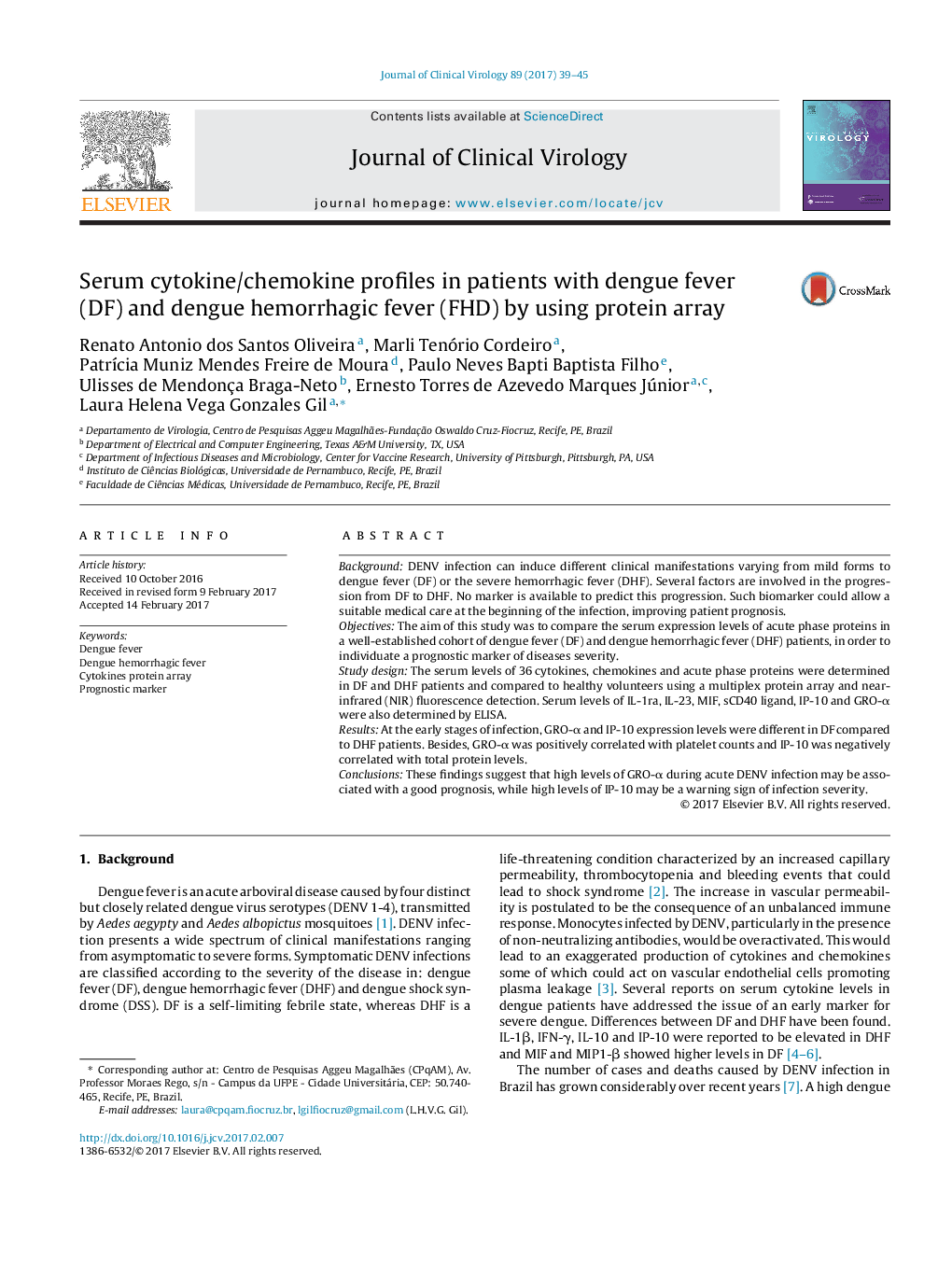| کد مقاله | کد نشریه | سال انتشار | مقاله انگلیسی | نسخه تمام متن |
|---|---|---|---|---|
| 5667991 | 1592337 | 2017 | 7 صفحه PDF | دانلود رایگان |

- Early prediction of dengue disease severity is important to prevent mortality.
- The aim of this study was to find potential prognostic markers of dengue severity.
- Serum expression levels of 36 cytokines were determined in DF and DHF patients.
- Differences were found in GRO-α and IP-10 expression levels during the acute phase.
BackgroundDENV infection can induce different clinical manifestations varying from mild forms to dengue fever (DF) or the severe hemorrhagic fever (DHF). Several factors are involved in the progression from DF to DHF. No marker is available to predict this progression. Such biomarker could allow a suitable medical care at the beginning of the infection, improving patient prognosis.ObjectivesThe aim of this study was to compare the serum expression levels of acute phase proteins in a well-established cohort of dengue fever (DF) and dengue hemorrhagic fever (DHF) patients, in order to individuate a prognostic marker of diseases severity.Study designThe serum levels of 36 cytokines, chemokines and acute phase proteins were determined in DF and DHF patients and compared to healthy volunteers using a multiplex protein array and near-infrared (NIR) fluorescence detection. Serum levels of IL-1ra, IL-23, MIF, sCD40 ligand, IP-10 and GRO-α were also determined by ELISA.ResultsAt the early stages of infection, GRO-α and IP-10 expression levels were different in DF compared to DHF patients. Besides, GRO-α was positively correlated with platelet counts and IP-10 was negatively correlated with total protein levels.ConclusionsThese findings suggest that high levels of GRO-α during acute DENV infection may be associated with a good prognosis, while high levels of IP-10 may be a warning sign of infection severity.
Journal: Journal of Clinical Virology - Volume 89, April 2017, Pages 39-45